Wakizashi Sword
In the Edo period, the wakizashi sword formed part of the basic samurai gear and was paired with a short and longsword, known as Daisho.
Wielded mostly to end a fight, the wakizashi might not have been considered as important or as dangerous as the katana, but it was used frequently to finish a battle when the enemy was already down on the ground.
As a Japanese sword, the wakizashi was one of the easiest swords to combine with others, such as the Katana or Tachi, because of its compact size. In Samurai society, the wakizashi also served another important purpose; it enabled warriors to assist fellow Samurai bound by honor to commit Seppuku, a ritual suicide after failing to uphold the Samurai code. Merchants, artisans, and commoners were prohibited from using longer weapons such as the Katana, allowing them to defend themselves with the shorter wakizashi. The chav class, which constituted merchants and commoners, possessed a less elegantly crafted version of the wakizashi which still bore the decorum restricted to Samurai weapons, illustrating the limited sociopolitical freedom and privilege associated with weapon ownership during that period.
No matter how you put it, Wakizashi has an undeniable significance in Japanese history. Would you like to possess a piece of history?
Keep reading, and you will know more about this weapon and how to select your Samurai sword Wakizashi.

Introduction to Japanese Swords
From the history and culture of Japan, the Samurai swords and Wakizashi, which are well-known blades, were created. The samurai used to keep the wakizashi as a sidearm sword, which could easily be accessed during close-quarters battles or in case of an emergency. Traditionally, the wakizashi has a blade that is between 12 and 24 inches and can be utilized using one hand. Even smaller than the wakizashi is the tanto sword which is a dagger that has a blade length below 12 inches. The ko wakizashi is an even shorter form of wakizashi and is also referred to as a mini wakizashi. As for the ko wakizashi, its blade is less than 18 inches long. These bladed gadgets served more than just striking foes— they were also revered for their art on hand, the blade skills, and the way these swordsmen lived.
History and Cultural Significance
Created during the Edo period in Japanese history, the wakizashi became a key weapon for samurai, particularly for indoor, tight-quarters fighting. It usually rested at the bearer’s left hip as a secondary to the broader katana. Its length was complemented by the o-wakizashi variant, which had a blade size of 24 inches. Apart from samurai, some civilians also wielded the wakizashi, particularly in feudal Japan. The blade's shorter size made it excellent for use in close-range battles where speed and accuracy were vital. It acted as more than just a weapon; the wakizashi carried societal significance and was typically centered around a samurai’s being, showcasing their culture, readiness, responsibility, and honor.
Wakizashi Sword Beyond Samurai
Beyond the samurai, the wakizashi was owned by martial artists and ordinary people. It was convenient to carry on long trips and provided effective self-defense in constricted areas. Based on blade length, there are different types of wakizashi: o-wakizashi is the longest, chu-wakizashi is mid-sized, and ko-wakizashi is the shortest at under 40cm and best suited for indoor use. Traditionally, the wakizashi was positioned with the cutting edge facing up and worn to the left side of the body. Its position allowed fast access in close-quarters combat, which highlights its practical and cultural significance throughout Japanese history.
Wakizashi VS Tanto
Although both wakizashi and tanto serve as short Japanese swords utilized as backup weapons, they have some differences. The tanto is smaller in size and more distinct as it often lacks a hand guard, or tsuba, due to its unique design and historical development. Its small size makes it easy to tuck away and multifaceted as an aid for stealthy self-defense and ambushes.
On the other hand, the wakizashi has a longer blade that permits more diverse slashing and stabbing maneuvers, thus making it more effective in battle. While not quite as lengthy as a katana, the wakizashi is more easily wielded one-handed and maneuvered indoors or in confined spaces, making it ideal for close-quarter combat. Both swords highlight the taper fusion of practicality and customs entwined within Japanese weaponry.
Materials and Craftsmanship
To fashion a strong and sharp blade, the wakizashi is usually made of high-carbon steel which is intricately forged and tempered. The wakizashi has a full tang design; this means that the blade and the handle are one solid piece of metal, providing strength and balance. The tsuka or the handle is often wrapped in cord or leather to provide a proper grip.
The tsuba, or guard, is usually made of metal or horn. Its scabbard, which is usually made of wood or metal, is where it is carried. The wakizashi is known for its usage in martial arts like iaido and tameshigiri due to its precise cutting ability and balanced construction. In addition, the wakizashi is an excellent self-defense weapon due to its compact dimensions and lightweight.
Wakizashi Sword For Sale
A wakizashi normally has a blade length of 12 to 24 inches. The longer versions, o-wakizashi, are nearer to the length of a katana, and the shorter ones, which are akin to a tanto, are called ko-wakizashi. Fine quality wakizashi swords are constructed from high-carbon steel, which is strong, and they also have full tang and blade durability. In forging these blades, one very important method is clay tempering, which provides them with a hard edge and tough spine through differential hardening. The wakizashi is not merely a version of a katana; it is a distinct weapon featuring its own strategies of forging techniques and distinct purpose.
Traditional wakizashi blades are made from Tamahagane steel, an expensive metal, as it requires an adjunct of folding and hammering to remove the material’s impurities alongside adding strength. Effectively polishing, heating, and clay tempering, along with the previously stated steps, enhance both the blade's sharpness and visuals. While modern bladesmiths make use of new materials and technologies, along with the ancient Japanese methods, they do stand pout as a ersevering art of sword crafting by improving strength and sharpness. This blend exemplifies the transition of craftsmanship throughout history.
Sword Mounting
An intriguing characteristic of the wakizashi is that it more often than not came with several sets of koshirae, which comprise the hilt, guard, and scabbard. These fittings were, in their broadest outlines, the same as those of the katana. The warriors could interchange them according to the occasion, reserving the more elaborate or exquisite ones for events or for special ceremonies.
What was the essence of the Wakizashi sword?
Wakizashi was a sidearm for a samurai designed for close-quarters finishing moves and was also utilized in seppuku. Life and practices of Miyamoto Musashi, especially his two sword-wielding influence on schools like Enmei Ryu and Niten Ichi-Ryu, greatly impacted the history and use of the Wakizashi.
What is the difference between Wakizashi and Katana traditionally?
Wakizashi vs Katana - The wakizashi is a shorter blade usually paired with other swords, whereas the katana is a mid-length Japanese sword primarily used as a first weapon.
Did the samurai fight with a Wakizashi?
Indeed, when the circumstances did not allow for the drawing of long swords, samurai employed shorter swords and daggers such as the Wakizashi and Tanto blades. They're fantastic for self-defense as well as for traveling. Ultimately, the certain situation and the individual samurai’s choice greatly determined the effectiveness and use of these weapons.
Wakizashi sword, Zoro swords, Anime swords, Demon Slayer sword, Zenitsu sword, Tanjiro Sword
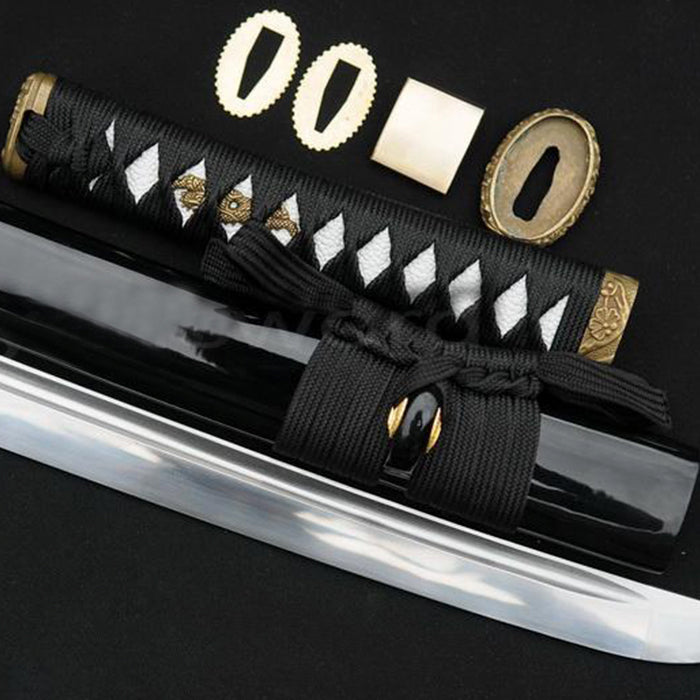
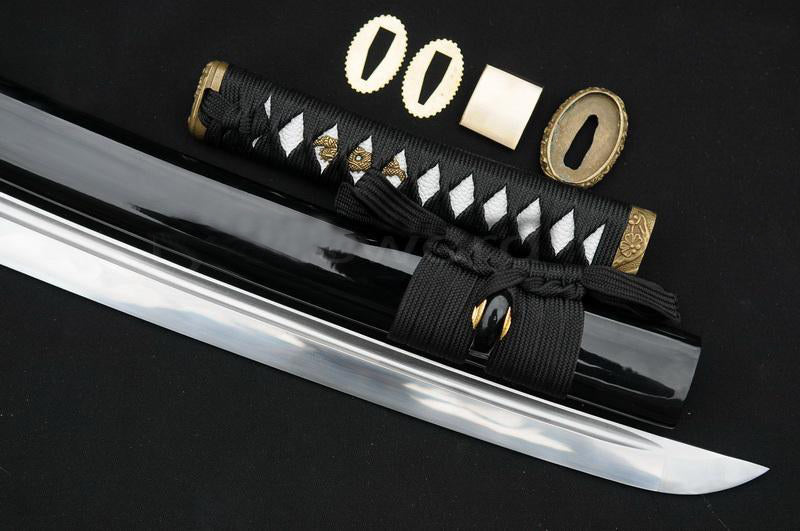 Hand Forged Black Japanese Samurai Wakizashi Sword Sharp Carbon Steel Blade
Hand Forged Black Japanese Samurai Wakizashi Sword Sharp Carbon Steel Blade
 Razor Sharp Japanese Samuria Clay Tempered Fulltang Folded Steel Wakizashi Sword
Razor Sharp Japanese Samuria Clay Tempered Fulltang Folded Steel Wakizashi Sword
 Sharp Hand Forged Full Tang Blade Japanese Samurai Wakizashi Sword Dragon Tsuba
Sharp Hand Forged Full Tang Blade Japanese Samurai Wakizashi Sword Dragon Tsuba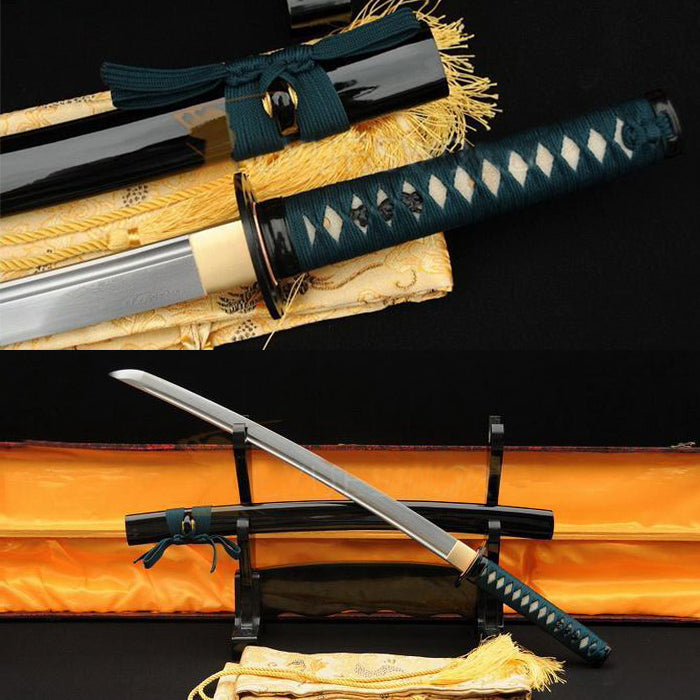
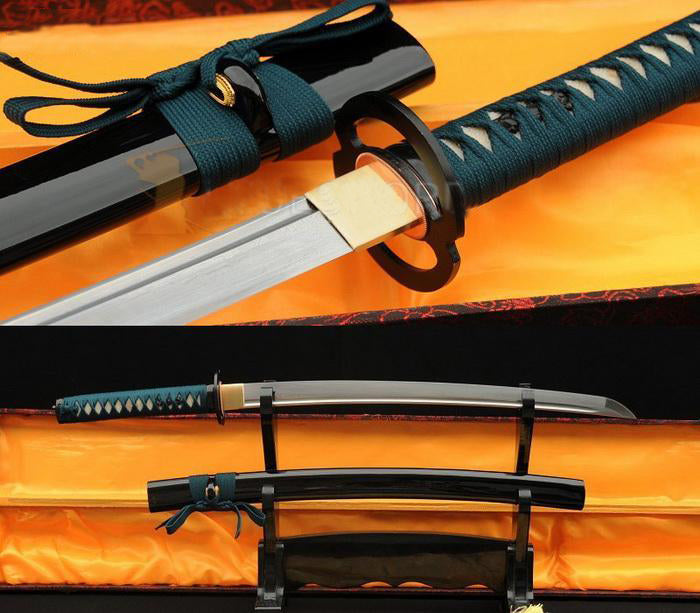 Folded Steel Samurai Wakizashi Sword Sharp Blade Iron Tsuba
Folded Steel Samurai Wakizashi Sword Sharp Blade Iron Tsuba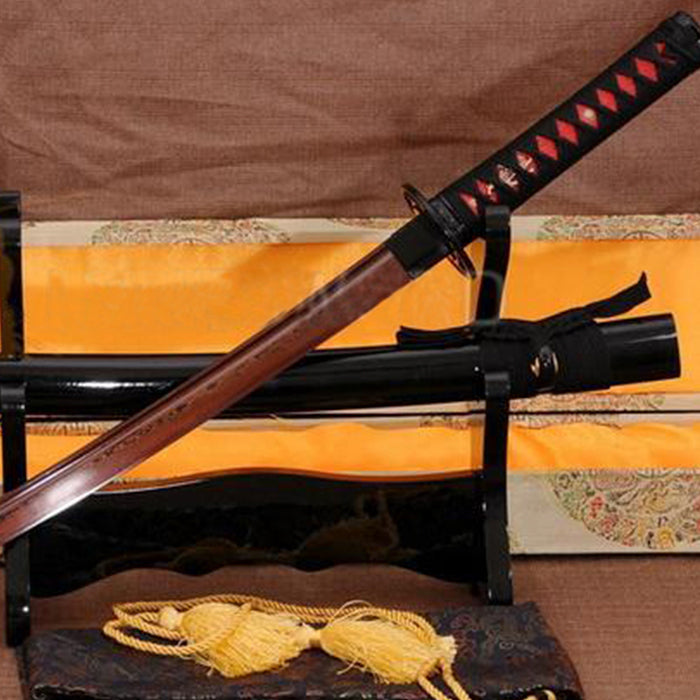
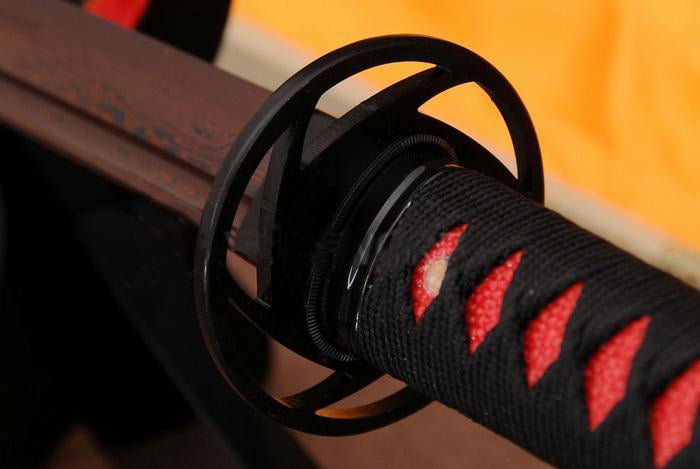 Authentic Samurai Damascu Red Folded Steel Wakizahsi Sword
Authentic Samurai Damascu Red Folded Steel Wakizahsi Sword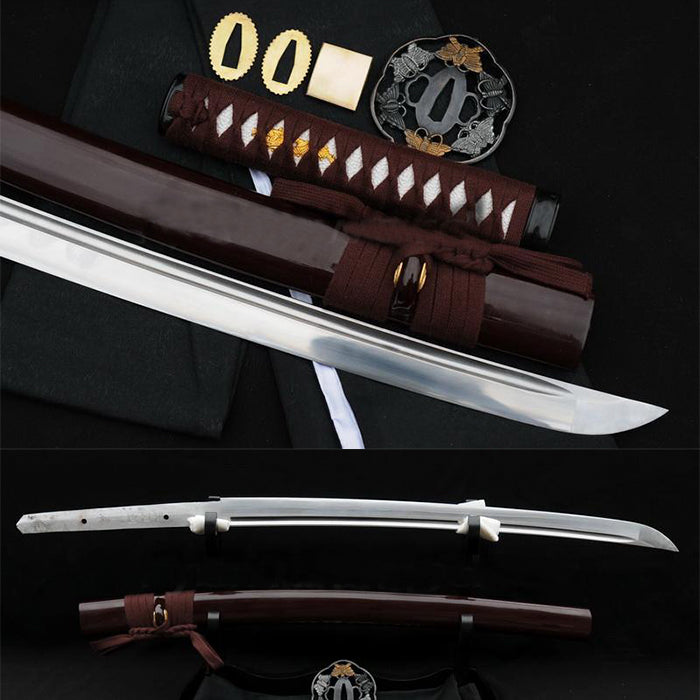
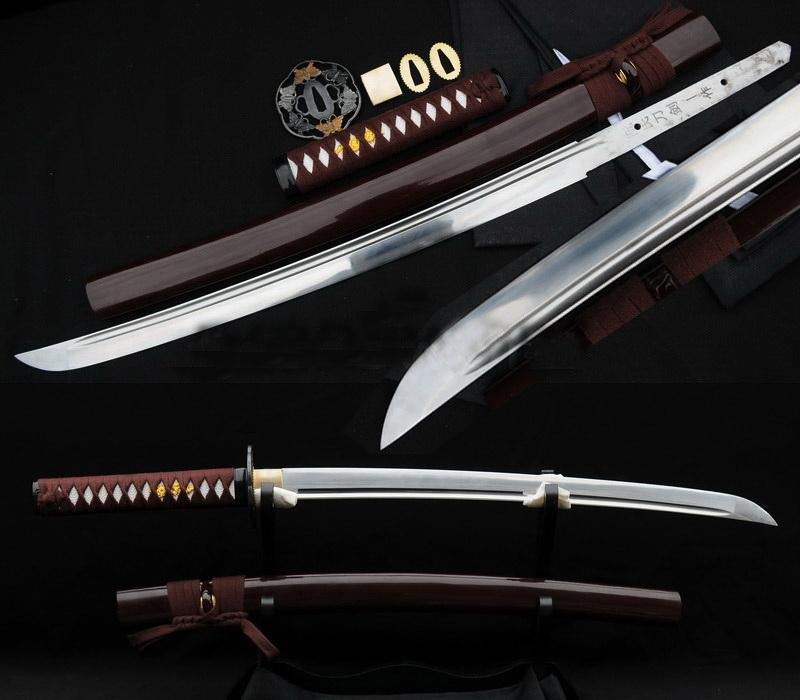 Hand Forged Butterfly Tsuba Japanese Samurai Wakizashi Sword Carbon Steel Blade
Hand Forged Butterfly Tsuba Japanese Samurai Wakizashi Sword Carbon Steel Blade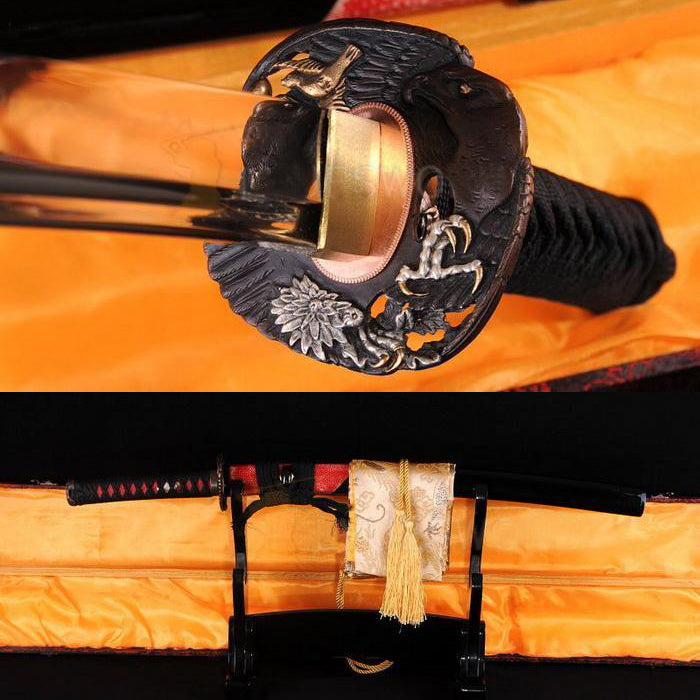
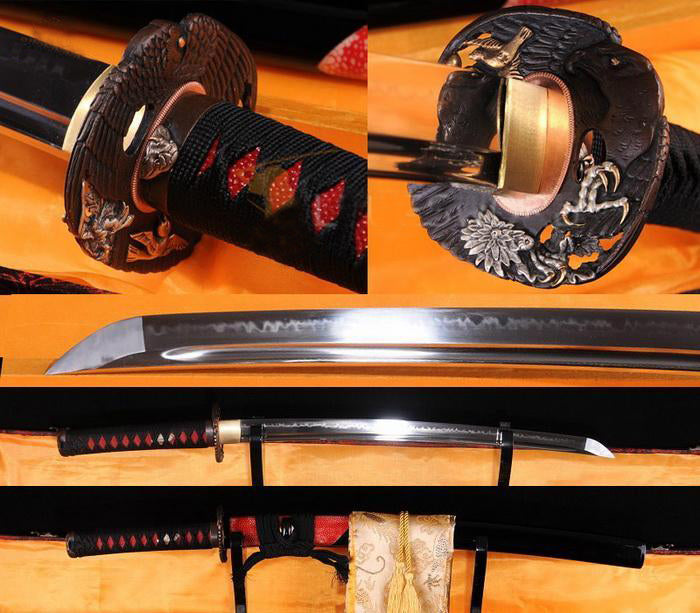 Japanese Wakizashi Sword Clay Tempered Blade Eagle Tsuba
Japanese Wakizashi Sword Clay Tempered Blade Eagle Tsuba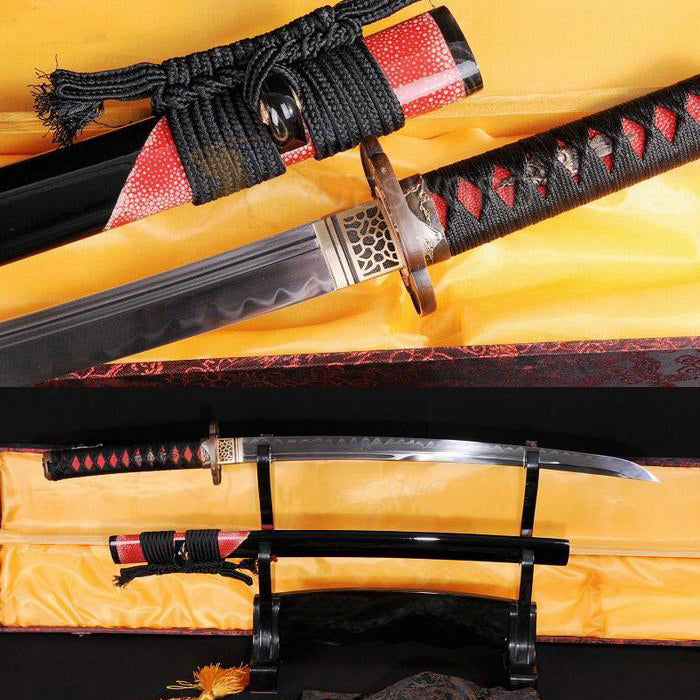
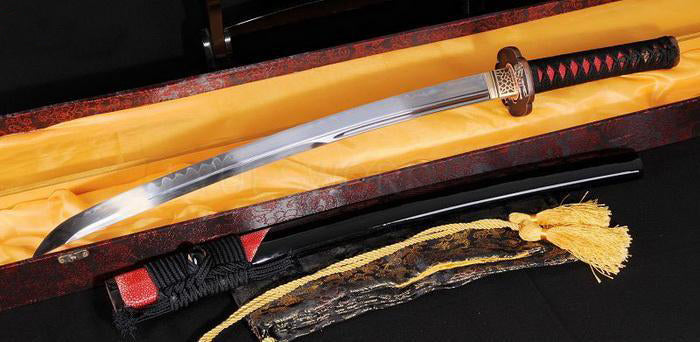 Authentic Japanese Samurai Wakizashi Sword Clay Tempered Blade Brass Tsuba
Authentic Japanese Samurai Wakizashi Sword Clay Tempered Blade Brass Tsuba
 Japanese Samurai Wakizashi Sword Razor Sword Tiger Tsuba
Japanese Samurai Wakizashi Sword Razor Sword Tiger Tsuba




















